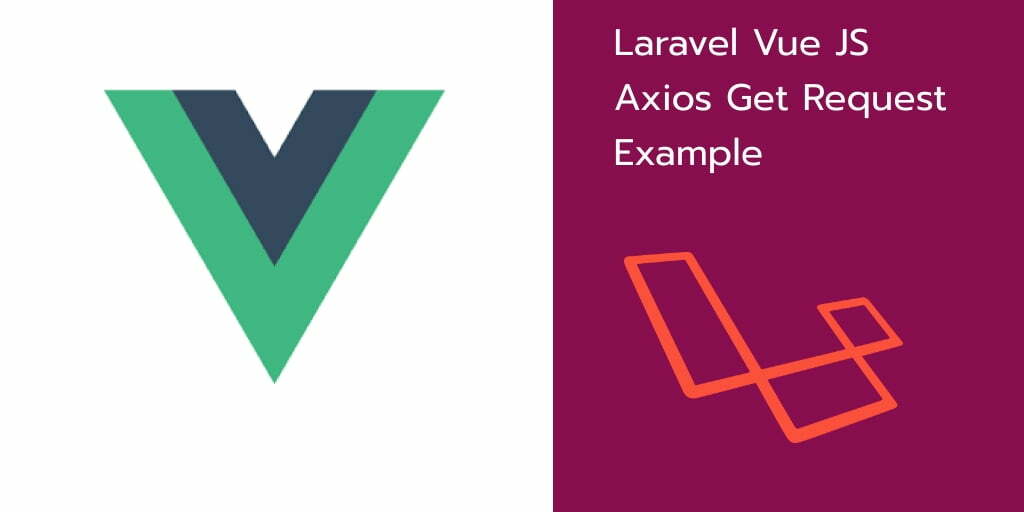Laravel vue js Axios get request example tutorial. Here, you will learn how use vue js get axios request in laravel to fetch records from database and pass data blade to vue js components.
This tutorial will guide you step by step on how to retrive data from database using axios get HTTP requests and as well as how to render data on vue js components in laravel.
Laravel 7 Vue JS Axios Get Request Example Tutorial
Just follow the following steps and make Axios HTTP get request in laravel with vue js and pass data blade views or controller to vue component laravel:
- Step 1: Download Laravel Fresh Setup
- Step 2: Setup Database Credentials
- Step 3: Generate Fake Data
- Step 4: Add Routes
- Step 5: Make Controller By Command
- Step 6: Install Vue Js dependency
- Step 7: Create blade file and layout
- Step 8: Run Development Server
Step 1: Download Laravel Fresh Setup
Use the following command to install the laravel fresh setup. So open your terminal OR command prompt and run following command:
composer create-project --prefer-dist laravel/laravel blog
Step 2: Setup Database Credentials
After successfully download laravel Application, Go to your project root directory and open .env file. Then set up database credential as follow:
DB_CONNECTION=mysql DB_HOST=127.0.0.1 DB_PORT=3306 DB_DATABASE=here your database name here DB_USERNAME=here database username here DB_PASSWORD=here database password here
Step 3: Generate Fake data
Before generate fake data into database table, open your terminal and run the php artisan migrate to migrate our tables into your database:
php artisan migrate
Now, use the following artisan command to generate dummy data:
php artisan tinker // then factory(\App\User::class,10)->create()
Step 4: Add Routes
Add the following routes into your route file. So go app/routes/web.php and update the following routes:
routes/web.php
Route::get('/users','UserController@index');
Route::get('/list','UserController@list');
Step 5: Make Controller By Command
Now open your terminal and run the following command:
php artisan make:controller UserController
This command will create a controller that name UserController inside the controller folder.
Next, open it app/Https/Controller/UserController.php and update the following methods into your UserController file:
<?php
namespace App\Http\Controllers;
use Illuminate\Http\Request;
class UserController extends Controller
{
public function index()
{
return view('users')
}
public function list()
{
return response()->json([
'users' => \App\User::latest()->get()
], Response::HTTP_OK);
}
}
Step 6: Install Vue Js dependency
Now, go inside the project folder and install the frontend dependencies using the following command.
npm install
Next Go to resources/assets/js/components/ folder. And create a new components name UserComponent.vue.
Then update the following code into your UserComponent.vue file:
<template>
<div class="container">
<div class="row justify-content-center">
<div class="col-md-12">
<div class="card">
<div class="card-header">User List</div>
<div class="card-body">
<table>
<tr>
<th width="50%">Name</th>
<th width="50%">Email</th>
</tr>
<tr v-for="user in users" :key="user.id">
<td>{{ user.name }}</td>
<td>{{ user.email }}</td>
</tr>
</table>
</div>
</div>
</div>
</div>
</div>
</template>
<script>
export default {
data() {
return {
users: {},
}
},
methods: {
getUser(){
axios.get('/list')
.then((response)=>{
this.users = response.data.users
})
}
},
created() {
this.getUser()
}
}
</script>
The above code is to display users list using axios get request in laravel.
Next, Go to resources/assets/js then open app.js file and intialize vue js components in this file.
So open app.js file and update the following code into your app.js file:
require('./bootstrap');
window.Vue = require('vue');
Vue.component('user-component', require('./components/UserComponent.vue').default);
const app = new Vue({
el: '#app',
});
Step 7: Create blade file and layout
Now, Open resources/layouts/app.blade.php and update the following code into it:
<!DOCTYPE html>
<html lang="en">
<head>
<meta charset="UTF-8">
<meta name="csrf-token" content="{{ csrf_token() }}">
<title>{{ config('app.name', 'Laravel') }}</title>
<link href="{{ mix('css/app.css') }}" rel="stylesheet">
<title>Send form data with vue js in laravel</title>
</head>
<body>
<div id="app">
<div class="py-4">
@yield('content')
</div>
</div>
<script src="{{ mix('js/app.js') }}" defer></script>
</body>
</html>
Next, resources/views/ and create a new blade view file name users.blade.php.
And update the following code into your users.blade.php view file:
@extends('layouts.app')
@section('content')
<div class="card-body">
<user-component></user-component>
</div>
@endsection
Step 8: Run Development Server
Now everything is set to go. Now just we have to compile our all javascript file. so run below command.
npm run dev //or npm run watch
Now you are ready to run this app, so hit the below URL into your browser:
http://localhost:8000/users
Conclusion
In this laravel vue js axios get request example, you have learned how to display data on vue components uisng axios get request with vue js in laravel.
